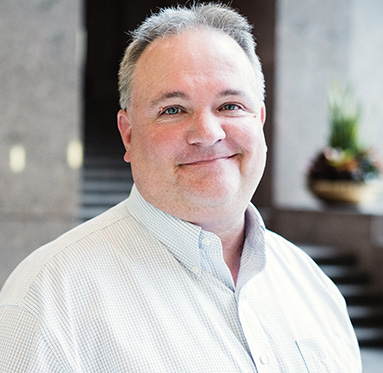February 8, 2024
True innovation in sustainability doesn’t stop at making operations, the supply chain and products do less harm. True innovation goes further to focus on doing more good in the world, overturning long-held assumptions, achieving transformative change and contributing a net positive impact.
That was one of the key themes coming out of a panel discussion that I moderated at the second annual Sustainability Summit convened by the Greater Cleveland Partnership (GCP) in late January. At the “Innovation for Sustainable Growth” session, the panelists were:
- Elisa Seddon, Technical Fellow, Lubrizol
- Steve Sumner, Vice President, Corporate Innovation, Lincoln Electric
- Chris Laszlo, Professor of Organizational Behavior, Case Western Reserve University
- Trisha Brown, Co-Director, Great Lakes Biomimicry
The consensus of the panelists was that the sustainability profession and its partners in the private, public and nonprofit sectors are not innovating fast enough or smart enough. Case’s Chris Laszlo said companies are generally not on pace to meet the 2030, 2040 and 2050 goals that have been set in a wide range of areas, including greenhouse gas emissions, waste reduction, biodiversity, water stewardship, safety, and diversity, equity and inclusion. Unfortunately, despite all these efforts to do less harm, he said many of the indicators relating to carbon emissions, water scarcity, loss of biodiversity, income inequality and more are getting worse.
One of the themes to emerge from the session was the potential impact of a mindset shift to focus on “capabilities not products.” In other words, true sustainability innovation will come from investing in capabilities that can be leveraged to benefit a wide range of applications for the long term – instead of in products that a company currently makes that try to solve today’s problems as if they are not going to change or grow over time.
Capabilities-focused innovation can be transformational for companies, but it is not easy. Seddon noted that Lubrizol, a nearly 100-year-old specialty chemicals manufacturing company, went so far as to adopt this new purpose statement: “Lubrizol science delivers sustainable solutions to advance mobility, improve wellbeing and enhance modern life.”
And Lincoln Electric’s Sumner highlighted his company’s move into manufacturing electric vehicle battery chargers. For more than 125 years, Lincoln Electric has manufactured power equipment for industrial and welding applications – the company is renowned as the Welding ExpertTM worldwide. Focusing on its core capability in power management created an avenue for the company to expand into the EV business, Sumner said.
The mission of Great Lakes Biomimicry is to help organizations learn from nature to accelerate innovation. Co-director Brown said biomimicry is one of the most effective tools for driving transformative innovation because nature is constantly evolving at scale, is regenerative and knows how to manage the interrelatedness of systems. Brown said, “Nature’s ability to help drive innovation in sustainability is based on over 3 billion years of experience in R&D. There must be something we can learn from that.”
Lubrizol’s Seddon said too many organizations come up short on true innovation for sustainability because they try to do it by themselves, and they may not have the knowledge, connections and resources to drive change at the whole system level. “We need more partnerships, and we need everyone moving together in a common direction.”
Dix & Eaton was pleased to be a sponsor of the GCP Sustainability Summit, which had more than 800 registrations for the daylong event. If you were there and want to talk more about what we all heard, please reach out to me. If you missed it, I would be happy to share more insights. You can reach me at glabar@dix-eaton.com.



